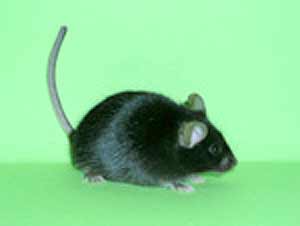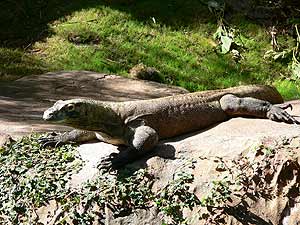To make a new individual, the DNA in the egg doubles to give the right amount. But when the DNA in the egg is doubled, only half of mom’s DNA is duplicated.
So the baby Komodo has twice as much of half of his mom’s DNA. Simple, huh?
Let’s give a concrete example to clear things up. And to make it interesting, let’s use Jane, a woman who hasn’t found her soul mate.
Imagine that Jane is a carrier for red hair. This means that one of her MC1R genes causes red hair and the other doesn’t. Jane doesn’t have red hair but carries the gene version that can cause it.
Each of her eggs has a 50-50 shot of getting the red hair version of the gene. Let’s say an egg that has the red hair version is turned into a baby.
When the egg’s DNA is duplicated, there are now two copies of this gene. Which means the baby will be a redhead. In other words, even though Jane does not have red hair, her fatherless child will.
All well and good but too bad it’ll probably never work in people. Unfortunately, what Komodo dragons can do, mammals (including us) can’t. Mammalian eggs need to be fertilized by sperm to grow into a new mammal.
Maybe if we can figure out why it doesn’t work in mammals, we can figure out some way around the issue. What’s different between a Komodo and a human egg? Well both have only half the usual number of chromosomes.
Komodo eggs can double their chromosomes to end up with the right number. A human egg can’t do this naturally but it can be done with chemicals.
 But whenever scientists do this with a mammalian egg, it never develops all the way. For example, mice embryos die pretty soon after being implanted in the womb.
But whenever scientists do this with a mammalian egg, it never develops all the way. For example, mice embryos die pretty soon after being implanted in the womb.
When scientists have investigated why this is, they found that it has to do with something called genetic imprinting. Males and females mark a few of the genes in their gametes (sperm and eggs) differently. To develop properly, an embryo needs both kinds of marks.
When an egg doubles its chromosomes, only the female marks are there. So no new baby results.
We don’t yet have the technology to add the male marks to egg DNA. But scientists have been able to make a female pup using two mouse eggs and no sperm. It wasn’t easy though.
First off, they had to change one mouse so that it made eggs that were more male-like. They did this by permanently mucking with the mouse’s DNA.
The other egg was taken at a very immature stage. At this stage, there aren’t too many female markings.
Out of 457 tries, they got two live mouse pups. Of course all of this would be impossible in people. No one should tolerate so many unsuccessful tries. Nor can we make the DNA changes in people that the scientists were able to do in one of the mice. And a woman would have to harvest eggs when she was a little girl.
So this won’t work either which is too bad. What a boon either of these techniques would be for people who haven’t yet found someone they want to have kids with. Or for same-sex couples who want their children to be both of theirs.
With current technology, no human egg will develop into a child without fertilization. Which means that for now, babies will have to happen the old fashioned way--with a sperm or egg donor.
A pup with two moms and no dad
http://www.thetech.org/genetics/ask.php?id=16
A dragon’s virgin birth
http://www.thetech.org/genetics/news.php?id=40
Asexual reproduction
http://users.rcn.com/jkimball.ma.ultranet/BiologyPages/A/AsexualReproduction.html
Dr. Barry Starr is a Geneticist-in-Residence at The Tech Museum of Innovation in San Jose, CA.
 Wouldn’t it be great if same-sex couples didn’t need a sperm donor? Or an egg donor? Or if men or women didn't have to wait for that special someone to have a child?
Wouldn’t it be great if same-sex couples didn’t need a sperm donor? Or an egg donor? Or if men or women didn't have to wait for that special someone to have a child?
